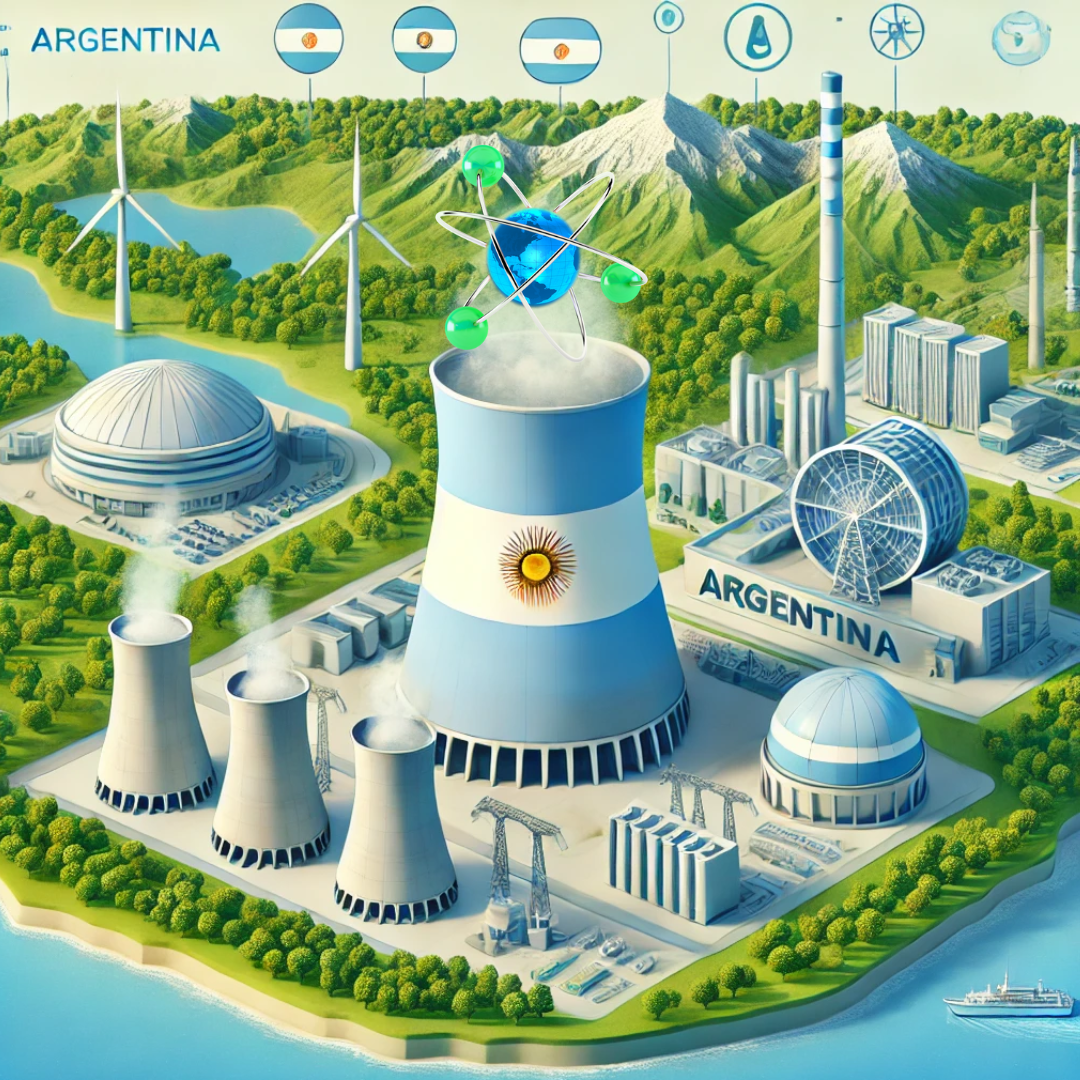
- As South America’s first adopter of nuclear energy, Argentina generates 1,755 MW representing 4.4% of its total energy.
- Argentina is enhancing its nuclear infrastructure with projects like Atucha I’s 20-year life extension, ensuring adherence to International Atomic Energy Agency safety standards, and overcoming delays caused by economic challenges.
- The domestically designed CAREM-25, a 32 MWe Small Modular Reactor under construction, showcases Argentina’s leadership in cutting-edge reactor technology, serving as a blueprint for larger commercial-scale designs and reinforcing the country’s position in global nuclear innovation.
Nuclear Energy is considered one of the most sustainable forms of energy as it doesn’t generate carbon emissions. Implementing and developing nuclear energy is a way for a country to reduce their overall carbon footprint and help them reach sustainable development goals. Many nuclear energy technological developments are in effect in different countries on an international scale, including Argentina. Argentina developed the first nuclear power plant on the entire continent, the Atucha I Nuclear Power Plant, in 1974. Additionally, Argentina has exported research reactors to Peru, Algeria, Egypt, Australia, and the Netherlands.
Argentina is the first country in South America to use nuclear energy and generates about 1,755 MW (4.4% of their total energy use). Now, there are 3 operating commercial nuclear reactors: Atucha I, Atucha II, and Embalse. The construction of the plant Atucha I, Argentina’s first nuclear power plant, began in June 1968, and it was connected to the National Electric System in March 1974, beginning commercial operations during the same year. After reaching the end of its initial operating license, the plant received a five-year extension before being shut down in September 2023. In anticipation of this planned shutdown, Nucleoeléctrica secured funding to initiate a second lifetime extension.
Atucha I is now preparing for a long-term operational extension of 20 years, with guidance from the International Atomic Energy Agency (IAEA) to meet safety standards. This project focuses on upgrading the reactor’s design and safety systems to support an additional 20 years of operation, although progress has faced delays due to austerity measures. This project reflects Argentina’s commitment to strengthening its nuclear capabilities while adhering to international safety and sustainability benchmarks.
Furthermore, among nearly a hundred SMR designs currently existing internationally, the Argentinean plant CAREM stands out as one of the few that is actually under construction, positioning the country as one of the leading developers and, consequently, as a global leader in this class of technology. The CAREM-25, a 25 MW domestically designed small modular reactor (SMR), is under construction at the Atucha site. Work on the Argentina SMR, financed entirely by the state, began in 2014 and is expected to achieve initial criticality by 2027, the 32 MWe prototype sources over 70% of its components locally.
Additionally, it is an innovative variant of the so-called Pressurized Water Reactors. The CAREM-25 reactor will generate 32 megawatts of electricity (enough to supply approximately 120,000 inhabitants). This reactor not only serves as an engineering reference for larger modules currently in the conceptual design stage but also facilitates the licensing process for future commercial-scale CAREM reactors.
These advancements reflect Argentina’s role as a regional leader in sustainable energy and its ongoing efforts to contribute to global nuclear innovation. By modernizing its existing infrastructure and advancing groundbreaking projects like CAREM, Argentina is setting a precedent for the integration of nuclear energy into sustainable development strategies, offering a pathway to a cleaner, more secure energy future.
